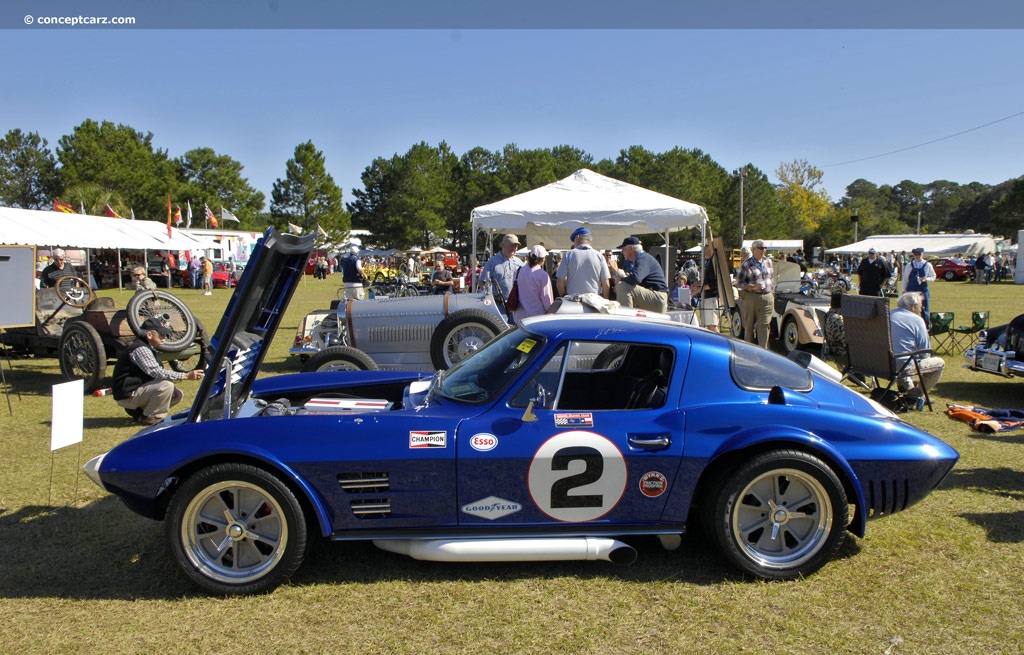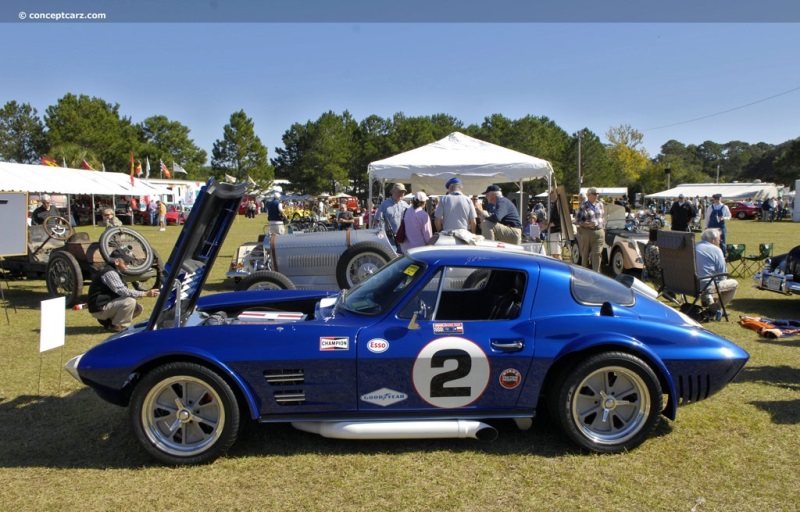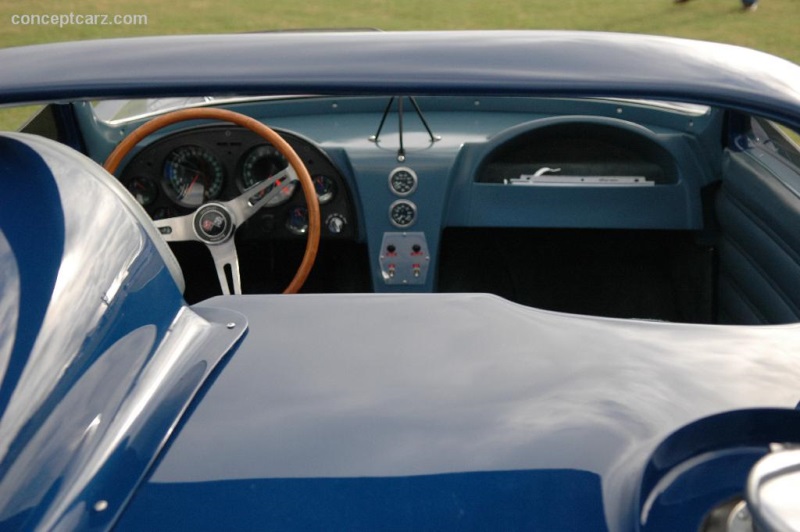The big three American automobile manufacturers entered into a non-racing agreement near the close of the 1950s. This meant that there would be no factory support for racing. Ford was the first to forgo the agreement in 1962 with their support for the Carroll Shelby racers. Chevrolet had pranced around the agreement by stating their prototypes were tested at the racing circuit.The Shelby designed vehicles were fast, scoring impressive finishes at racing circuits such as LeMans. GM tried to beat them with their Corvettes but they had their shortcomings. Their chassis was heavy and their brakes were not up to par. Zora Arkus-Duntov, the father of the Corvette, pushed GM executives to create a new vehicle that could compete with the Cobra. The resulting design was dubbed the Grand Sport. It was similar in design to a Corvette Coupe but clothed in fiberglass. Disc brakes replaced the drums. Weight was further reduced with the adoption of a ladder frame with oval tubes. A 377 cubic-inch fuel-injected V8 capable of producing 550 horsepower was proposed to power the Grand Sport, but never made it off the testing floor. Instead, a 327 cubic-inch engine producing 360 horsepower was installed.Five examples, all in coupe form, were created and supplied to privateers for racing. To pass homologation requirements for GT racing, 100 examples needed to be produced. Since this requirement was not met, the Grand Sport raced in the prototype class where they were provided no competition to the powerful, mid-engined racers.The Grand Sport did get an opportunity to challenge the Cobras at the 1963 Nassau Speed Week. An aluminum eight-cylinder engine capable of producing nearly 500 horsepower was installed into the mouth of the corvette. By the end of the race, the Grand Sport had proven their point and completely conquered the Cobras. The Grand Sports were prepared for the 1964 Daytona and Sebring races. These tracks are extremely fast and vehicles with aerodynamic bodies have a better advantage. To capitalize, two of the vehicles were transformed to convertibles. Unfortunately, GM halted the project and the Grand Sports were not raced. The cars were sold to privateers where they were campaigned at various racing circuits. One of the famous privateers was Roger Penske who defended the Nassau GT Victory with a repeat in 1964.
by Daniel Vaughan | Feb 2006
by Daniel Vaughan | Feb 2006
Similar Vehicles
Similarly Sized Vehicles
from 1964
Chevrolet Monthly Sales Volume
March 2023
398,141
1964 Chevrolet Corvette Grand Sport Vehicle Profiles
Recent Vehicle Additions
Performance and Specification Comparison
Related Automotive News
RRDC Evening With Emerson Fittipaldi A Highlight Of Long Beach Grand Prix
LONG BEACH, Calif. (April 7, 2017) - The April 6 RRDC Evening with Emerson Fittipaldi Presented by Firestone boasted a capacity crowd of auto racing dignitaries, corporate executives and champion race-car drivers, as the two-time Formula 1 and...

Corvette Grand Sport's Racing Legacy On and Off the Track
1960 – Urged by Zora Arkus-Duntov, Corvettes first chief engineer, racer Briggs Cunningham entered three mostly stock Corvettes in the 24 Hours of Le Mans – each powered by the innovative 283 Fuelie mechanically fuel-injected small block V8...

CHEVROLET TO SHOW CHAPARRAL VISION GRAN TURISMO CONCEPT
Boundary-pushing, Chevy-powered race cars changed motorsports design
DETROIT – When racers Jim Hall and Hap Sharp founded Chaparral Cars in 1962, few could have guessed how they would shake up the conformities of the racing world – and...
RRDC VOTES IN 37 NEW MEMBERS FOR 2013
HILLIARD, Ohio (Nov. 7, 2013) - Thirty-seven race-car drivers and motorsports professionals have been voted into the Road Racing Drivers Club in 2013. The group includes 13 Regular Members from the open-wheel and sports-car racing ranks, 20 Associate...

1964 Nurburgring 1000 Kilometers: Survive for One Last Victory
During the late 1950s, Richie Ginther would begin a relationship with John von Neumann and this partnership would result in one of the most dominant periods of American sportscar racing in which Ginther and Porsche would be virtually unbeatable. Nearly...




























